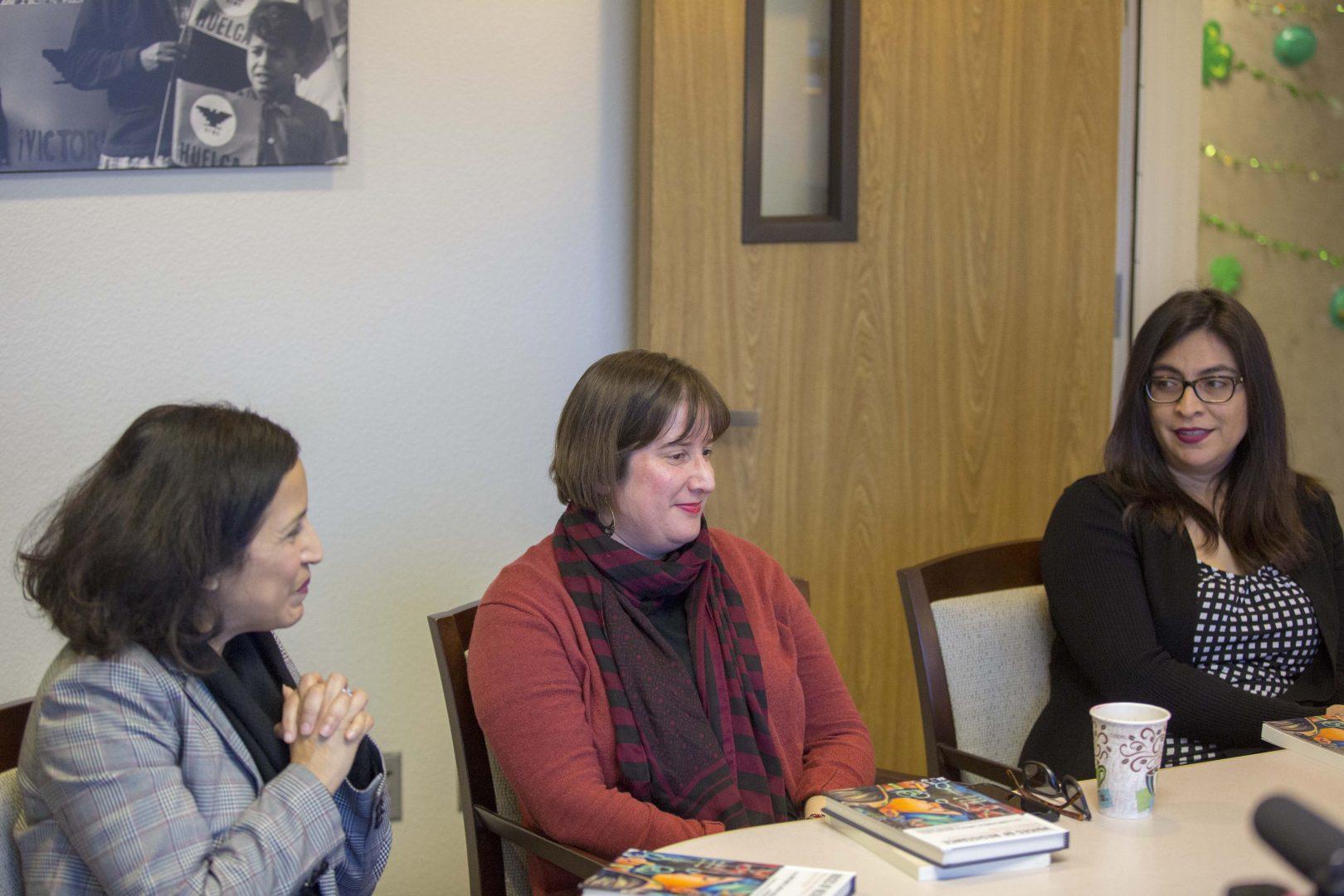With the growing field of Chicano studies, three professors at Fresno State joined together last year to put together a book packed with some of the most necessary writings for youth of the Chicano culture.
Dr. Laura Alamillo, associate dean of the Kremen School of Education and Human Development; Dr. Cristina Herrera, chair of the department of Chicano and Latin American studies; and Dr. Larissa Mercado-Lopez, associate professor of the women’s studies program, collaborated to edit the book “Voices of Resistance: Interdisciplinary Approaches to Chican@ Children’s Literature.”
The book, which was released in December 2017, features a collection of essays that analyze different literature about Chicano children and young adults. The different essays in the book address Chicano picture books, chapter books and young adult books, and explore topics such as the Chicano(a) identity and consciousness, gender, sexuality and feminism.
The book also includes a foreword by former U.S. Poet Laureate Juan Felipe Herrera.
The three faculty members say that a book like theirs — one that focuses on Chicano literature for the young — is hard to find. They hope it will be a helpful resource for students in preschool through 12th grade to read stories that may empower them.
“It’s a calling for educators to make more meaningful decisions in their classroom that really address the need,” Alamillo said.
Herrera and Mercado-Lopez said that the essays also provide educators with a way to have conversations about gender and sexuality, which often can be difficult to discuss.
“When I teach young adult literature, that’s what I think about — ‘What does young adult literature teach us about adulthood, and how can we use our adult perspective to think about the challenges facing adolescents and youth identities?’” Herrera said.
Mercado-Lopez said children read and internalize the ideas of books, shaping their perceptions of social constructs. The new book serves as a resource for teachers on how to have cultural conversations, and it provides representations of diverse identities and life experiences, Mercado-Lopez added.
“I think that it’s really powerful when [students] are able to see themselves and when teachers are able to have these conversations about these parts of their complex identities that maybe exist outside of these mythical norms,” Mercado-Lopez said. “We wanted this to be a resource for educators across a spectrum of institutions and for authors and independent scholars, as well.”
The educators said that the process of compiling essays for the book required a lot of meetings through Skype or chatting over Facebook as they worked with different authors to edit toward the final publication.
“We’re coming from different disciplines, so that’s what I think was just so fascinating,” Alamillo said. “We were able to come up with this amazing collection, all Fresno State faculty, all really committed to this project and we’re really proud of it.”
Good communication with each other and their clients, as well as working around each other’s personal schedules was also important, Herrera said.
“I think what I really appreciated was the way the whole process was very Chicana feminist at its core in that it was a very collaborative dynamic based on respect and trust,” Herrera said.
Another important aspect of the book, the women said, was picking an image for the cover. Instead of choosing from those provided by the publisher, Rowman and Littlefield, the professors commissioned a painter from San Antonio — Ernesto Cuevas, Jr.
His painting depicts a young girl writing.
“This cover really represents a lot of the voices and experiences with this young girl,” Alamillo said.
“We liked the idea of a brown girl on the cover,” Herrera added.
Herrera said that some of her students may not always acknowledge their professors’ contributions and active work within their fields of study or that they do more than teach and grade papers.
“I think it’s important that our students see us as scholars, as researchers and so I look forward to this book being used in the classrooms, maybe assigning it someday,” Herrera said.
With the growth of Chicano studies and literature, Mercado-Lopez said the book serves as a form of resistance against legislation that banned Mexican-American studies in places like Arizona.
“I think by putting this together, we are widening those possibilities for students and how they see themselves and what the possibilities are for them to speak through their experiences and produce scholarship in creative writing through those experiences,” Mercado-Lopez said.
“Voices of Resistance: Interdisciplinary Approaches to Chican@ Children’s Literature” is available to check out from the Henry Madden Library, and it available to purchase through Amazon, Barnes and Noble and the Rowman and Littlefield website.




